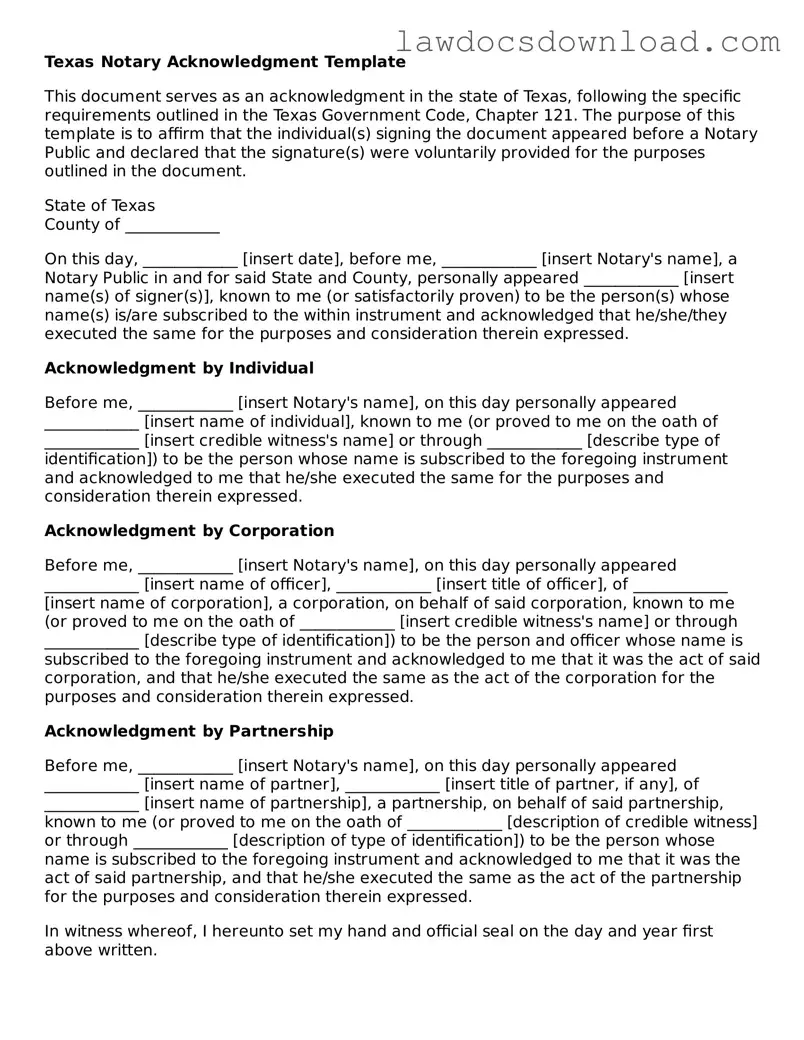Texas Notary Acknowledgment Template
This document serves as an acknowledgment in the state of Texas, following the specific requirements outlined in the Texas Government Code, Chapter 121. The purpose of this template is to affirm that the individual(s) signing the document appeared before a Notary Public and declared that the signature(s) were voluntarily provided for the purposes outlined in the document.
State of Texas
County of ____________
On this day, ____________ [insert date], before me, ____________ [insert Notary's name], a Notary Public in and for said State and County, personally appeared ____________ [insert name(s) of signer(s)], known to me (or satisfactorily proven) to be the person(s) whose name(s) is/are subscribed to the within instrument and acknowledged that he/she/they executed the same for the purposes and consideration therein expressed.
Acknowledgment by Individual
Before me, ____________ [insert Notary's name], on this day personally appeared ____________ [insert name of individual], known to me (or proved to me on the oath of ____________ [insert credible witness's name] or through ____________ [describe type of identification]) to be the person whose name is subscribed to the foregoing instrument and acknowledged to me that he/she executed the same for the purposes and consideration therein expressed.
Acknowledgment by Corporation
Before me, ____________ [insert Notary's name], on this day personally appeared ____________ [insert name of officer], ____________ [insert title of officer], of ____________ [insert name of corporation], a corporation, on behalf of said corporation, known to me (or proved to me on the oath of ____________ [insert credible witness's name] or through ____________ [describe type of identification]) to be the person and officer whose name is subscribed to the foregoing instrument and acknowledged to me that it was the act of said corporation, and that he/she executed the same as the act of the corporation for the purposes and consideration therein expressed.
Acknowledgment by Partnership
Before me, ____________ [insert Notary's name], on this day personally appeared ____________ [insert name of partner], ____________ [insert title of partner, if any], of ____________ [insert name of partnership], a partnership, on behalf of said partnership, known to me (or proved to me on the oath of ____________ [description of credible witness] or through ____________ [description of type of identification]) to be the person whose name is subscribed to the foregoing instrument and acknowledged to me that it was the act of said partnership, and that he/she executed the same as the act of the partnership for the purposes and consideration therein expressed.
In witness whereof, I hereunto set my hand and official seal on the day and year first above written.
____________________
Notary Public in and for the State of Texas
My Commission Expires: ____________
